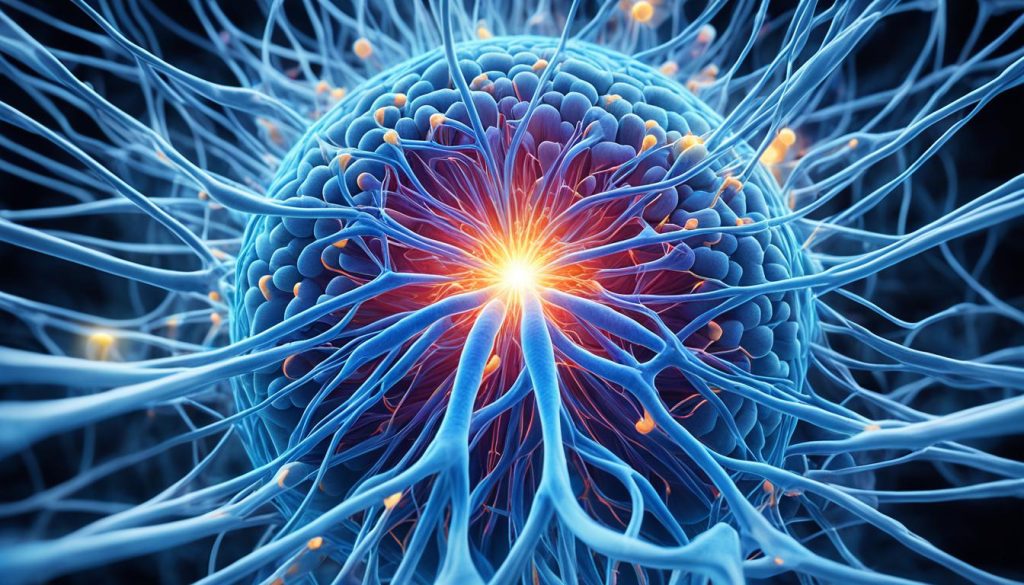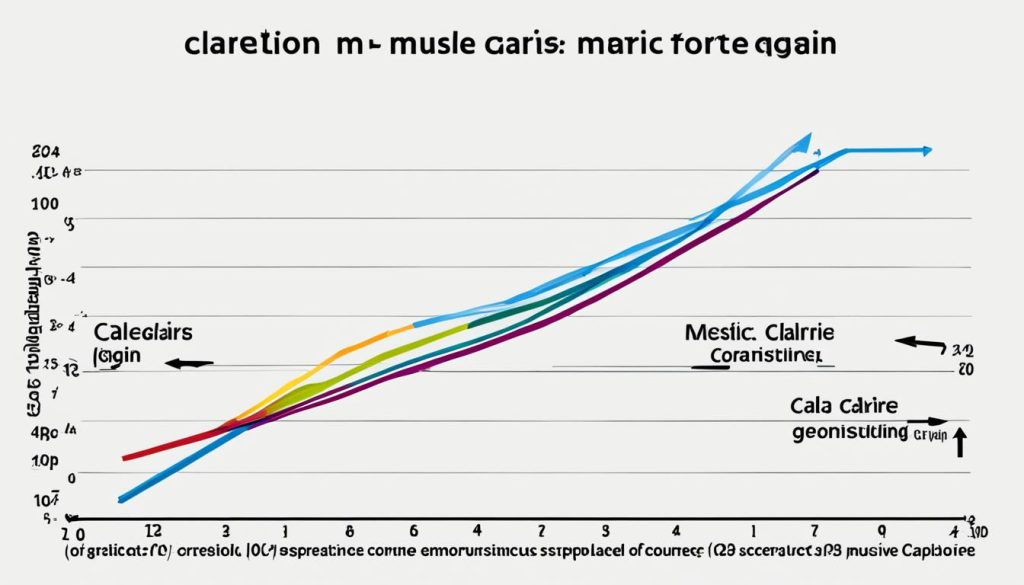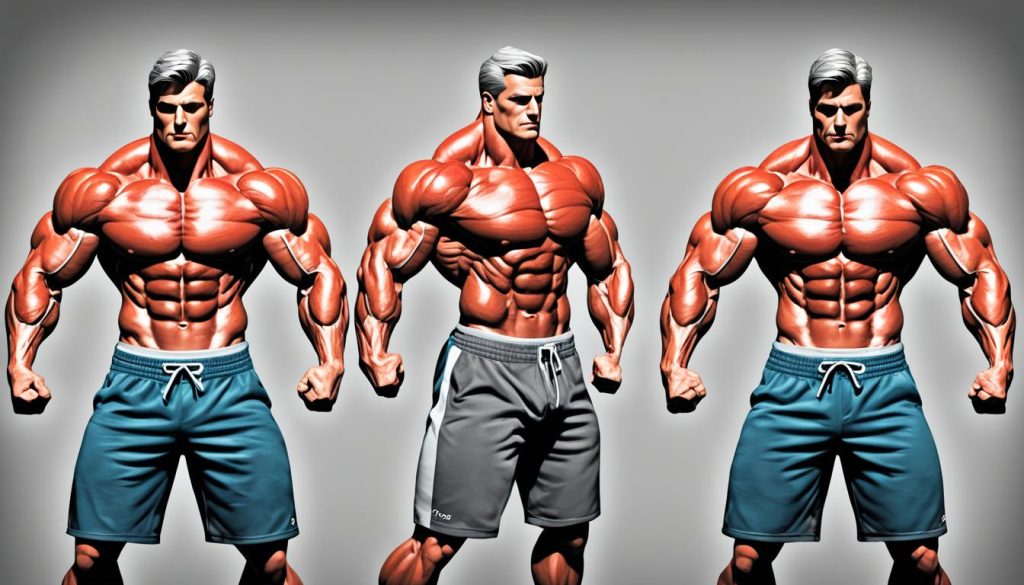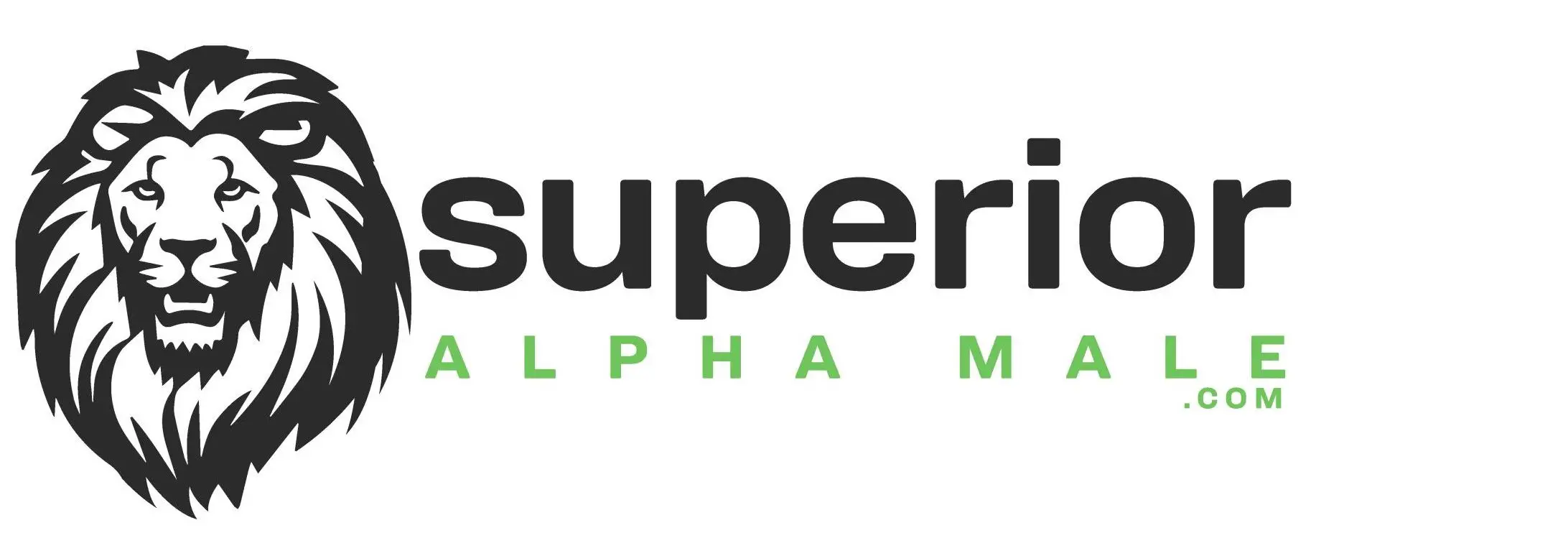Ad Blocker Detected
Our website is made possible by displaying online advertisements to our visitors. Please consider supporting us by disabling your ad blocker.
Building muscle goes beyond just improving your physical appearance. It supports joint health, boosts metabolism, enhances everyday functionality, and increases confidence. While building muscle requires dedication, it doesn’t have to be overly complicated. By following a few expert tips, you can maximize your muscle-building efforts and achieve effective gains.
Key Takeaways:
- Building muscle offers various benefits, including improved joint health and increased calorie burn.
- Muscle hypertrophy, which is the growth of muscle cells, can be stimulated through resistance training and progressive overload.
- Adequate protein intake is essential for muscle growth and can be obtained from sources like chicken, eggs, and lean beef.
- Creating a caloric surplus by consuming more calories than your body burns supports muscle gains.
- Incorporating compound exercises and muscle-specific exercises into your workouts ensures comprehensive muscle development.
Why Is Building Muscle Beneficial?
Building muscle offers a multitude of benefits that extend well beyond mere physical appearance. By engaging in muscle-building activities, you can enhance your overall well-being and enjoy a wide range of advantages.
- Muscle and Joint Health: The process of building muscle helps improve joint support and stability. Strengthening the surrounding muscles can alleviate stress on the joints, reduce the risk of injuries, and enhance overall joint health.
- Metabolism Boost: Increasing muscle mass can lead to a higher metabolic rate. Muscles require more energy to maintain, which means you’ll burn more calories even at rest. This can aid in weight management and support a healthy body composition.
- Better Blood Composition: Building muscle can positively impact blood composition. It can help regulate blood sugar levels, improve insulin sensitivity, and enhance cardiovascular health.
- Everyday Functionality: Strengthening your muscles can greatly improve your everyday functionality. From carrying groceries to climbing stairs, having well-developed muscles makes daily activities easier and more efficient.
- Confidence Boost: Gaining muscle not only improves your physical capabilities but also boosts self-confidence. Achieving your muscle-building goals and witnessing the changes in your body can have a profound impact on your self-esteem and overall well-being.
Building muscle offers a wide range of benefits beyond physical appearance. It supports joint health, increases metabolism, improves blood composition, enhances everyday functionality, and boosts confidence.

By understanding the various advantages of building muscle, you can be motivated to embark on a muscle-building journey that not only transforms your physique but also enhances your overall quality of life.
Understanding Muscle Hypertrophy
Muscle hypertrophy is the process of increasing the growth of muscle cells. Through targeted resistance training, you can stimulate muscle fiber size and trigger the release of muscle-growing hormones. This leads to muscle growth and improved overall strength and performance.
Resistance training is the key component in promoting muscle hypertrophy. By challenging your muscles through various exercises and progressively increasing the intensity, you create an environment that promotes muscle growth. This concept is known as progressive overload.
Progressive overload involves gradually increasing the demands placed on your muscles. This can be achieved by increasing the weight, the number of repetitions, or the intensity of your workouts over time. By consistently pushing your muscles beyond their comfort zone, you stimulate muscle fiber damage and create the ideal conditions for growth and adaptation.
“The key to muscle growth is to constantly challenge your muscles with increasing loads and intensity. By doing so, you promote muscle hypertrophy and create a stronger, more resilient physique.”
During resistance training, the microtears that occur in the muscle fibers are repaired, leading to muscle growth and increased muscle fiber size. This process is facilitated by the release of muscle-growing hormones, such as testosterone and growth hormone.
It’s important to note that muscle hypertrophy can occur in two ways: myofibrillar hypertrophy and sarcoplasmic hypertrophy. Myofibrillar hypertrophy involves an increase in the size and number of contractile proteins within the muscle fibers, resulting in increased strength. Sarcoplasmic hypertrophy, on the other hand, involves an increase in the fluid and energy-storing components of the muscle cells, which contributes to increased muscle size.
By incorporating resistance training into your fitness routine and following the principles of progressive overload, you can effectively stimulate muscle hypertrophy and promote muscle growth.
The benefits of muscle hypertrophy:
- Increased strength and power
- Improved overall muscle definition and appearance
- Enhanced athletic performance
- Better metabolic health and increased calorie burn
- Reduced risk of injury
Understanding muscle hypertrophy is essential for anyone looking to build muscle and achieve their fitness goals. By implementing progressive overload and resistance training, you can optimize muscle growth and take your physique to the next level.
Maximizing Muscle Building with Protein
When it comes to muscle growth, protein is an essential component. It plays a vital role in stimulating protein synthesis, which is necessary for building new muscle tissue.
For optimal muscle development, it’s important to consume an adequate amount of protein. Typically, experts recommend around 1 gram of protein per pound of body weight. This helps support muscle repair and growth, ensuring that you’re providing your body with the building blocks it needs.
But where can you find quality sources of protein? Here are some excellent options:
| Protein Sources | Protein Content (per 100g) |
|---|---|
| Chicken Breast | 31g |
| Eggs | 13g |
| Fish (Salmon) | 20g |
| Lean Beef | 26g |
| Greek Yogurt | 10g |
Include these protein-rich foods in your diet to maximize muscle-building potential. Remember to balance your protein intake with other essential nutrients like carbohydrates and healthy fats for overall nutritional balance.

Caloric Surplus for Muscle Building
To effectively build muscle, you need to create a caloric surplus by consuming more calories than your body burns. This surplus provides the energy necessary for muscle growth and supports your bulking phase. Calculating your caloric needs based on your weight and activity level is crucial for optimizing muscle gains.
When aiming for muscle growth, it’s essential to be in a caloric surplus to ensure your body has enough fuel to build new muscle tissue. A caloric surplus provides your body with the extra energy it needs to support the muscle-building process.
“To build muscle, you need to consume more calories than you burn.”
Calculating Your Caloric Needs
Calculating your caloric needs for muscle building involves determining your Total Daily Energy Expenditure (TDEE) and then adding a surplus of calories on top of that. TDEE is the total number of calories your body needs to maintain its current weight.
To calculate your TDEE, you can use an online calculator or consult with a nutritionist. Once you have your TDEE, you can add a caloric surplus of around 250-500 calories per day to support muscle gains.
Tracking Calorie Intake
To ensure you’re in a caloric surplus, it’s crucial to track your daily calorie intake. There are several mobile apps and websites available that can help you easily monitor your calorie intake.
Remember that consistent and accurate tracking of your calorie intake is essential for effective muscle building. It allows you to make adjustments as needed, ensuring you are consistently in a caloric surplus to support your muscle-building goals.
| Benefits of a Caloric Surplus for Muscle Building |
|---|
| Provides the energy required for muscle growth |
| Supports the bulking phase |
| Ensures your body has enough fuel for muscle development |
| Facilitates the recovery process after intense workouts |
| Optimizes muscle protein synthesis |
Remember that while being in a caloric surplus is essential for muscle building, it’s important to maintain a balance and not exceed the recommended surplus. Consuming excessive calories can lead to unwanted fat gain.
By understanding and implementing a caloric surplus in your muscle-building journey, you are providing your body with the necessary resources to maximize muscle gains and achieve optimal muscle development.

Resistance Training for Muscle Growth
When it comes to building muscle, resistance training is an essential component of your workout routine. One of the most effective forms of resistance training is weightlifting, which involves using external weights such as dumbbells, barbells, and resistance machines to provide the necessary resistance for muscle growth.
Compound exercises are particularly beneficial for muscle growth as they engage multiple muscle groups simultaneously. These exercises, such as squats, deadlifts, bench presses, and pull-ups, target large muscle groups and stimulate the maximum amount of muscle fibers. By incorporating compound exercises into your resistance training regimen, you can optimize muscle stimulation and promote overall muscle development.
Progressive overload is a key principle in resistance training for muscle growth. This involves gradually increasing the weight load over time to continually challenge your muscles. By progressively increasing the resistance, you create the necessary stimulus for muscle growth and adaptation.
Structuring your resistance training workouts with appropriate sets, repetitions, and rest periods is also crucial for optimal muscle development. Performing multiple sets of each exercise with a moderate to heavy weight load and allowing for sufficient rest periods between sets ensures that you adequately stimulate your muscles while enabling sufficient recovery.
“Resistance training is the cornerstone of muscle growth. By incorporating weightlifting and compound exercises into your workout routine and progressively increasing the weight load, you can effectively stimulate your muscles for maximum growth and strength gains.”
To further emphasize the effectiveness of resistance training for muscle growth, here is a table highlighting the benefits of incorporating compound exercises into your workout routine:
| Benefits of Compound Exercises | |
|---|---|
| • Engages multiple muscle groups simultaneously | |
| • Stimulates maximum muscle fibers | |
| • Promotes overall muscle development |
By prioritizing resistance training, including weightlifting and compound exercises, in your workout routine, you can effectively stimulate your muscles for optimal muscle growth and development.

Choosing the Right Exercises
Incorporating muscle-specific exercises into your workout routine is crucial for targeting specific muscle groups. Choosing the right exercises can significantly impact your muscle development and overall gains. By combining compound movements and isolation exercises, you can create a well-rounded training program that maximizes muscle growth.
Compound Movements for Overall Muscle Development
Compound movements are exercises that involve multiple joints and muscle groups, allowing you to work several muscles simultaneously. These exercises are highly effective for building overall strength and muscle size. They also provide functional benefits that translate into improved performance in daily activities or sports.
“Compound exercises are the foundation of any muscle-building program. They stimulate the release of anabolic hormones and increase overall muscle activation,” says fitness expert Jessica Wilson.
Examples of compound movements include:
- Squats
- Bench press
- Deadlifts
- Pull-ups
- Shoulder press
By incorporating compound movements into your routine, you engage multiple muscle groups, promoting balanced muscle development and increasing your overall strength.
Isolation Exercises for Targeted Muscle Engagement
Isolation exercises are designed to specifically target and isolate individual muscles. These exercises are ideal for targeting weak areas or focusing on specific muscle groups that require additional attention. Including isolation exercises in your routine allows you to address muscle imbalances and achieve a more symmetrical physique.
Some examples of isolation exercises include:
- Bicep curls
- Tricep pushdowns
- Lateral raises
- Leg extensions
- Hamstring curls
Isolation exercises enable you to prioritize specific muscles and fine-tune your physique according to your goals and preferences.
Finding the Balance
Incorporating both compound movements and isolation exercises is essential for comprehensive muscle development. While compound movements work multiple muscle groups, isolation exercises help to target specific muscles and address individual needs.
Finding the right balance depends on your personal goals, strengths, and weaknesses. It is recommended to prioritize compound movements in your routine while including isolation exercises as accessories for specific muscle groups.
“Achieving a balance between compound and isolation exercises ensures that you’re targeting all areas effectively and creating a well-rounded physique,” says renowned fitness coach, Mark Stevens.

| Exercise Type | Definition | Examples |
|---|---|---|
| Compound Movements | Exercises that work multiple joints and muscle groups simultaneously | Squats, Bench press, Deadlifts |
| Isolation Exercises | Exercises that target specific muscles and work them in isolation | Bicep curls, Tricep pushdowns, Lateral raises |
Proper Nutrition for Muscle Building
Proper nutrition plays a crucial role in your muscle-building journey. In addition to consuming an adequate amount of protein, you also need to pay attention to your carbohydrate and fat intake. Balancing these macronutrients based on your individual needs and body weight is key to maximizing your muscle-building efforts.
Protein intake is essential for muscle growth as it supports protein synthesis, which is the process of building new muscle tissue. Aim to consume around 1 gram of protein per pound of body weight. Good sources of protein include chicken, eggs, fish, lean beef, and dairy products.
Carbohydrates are an important fuel source for your workouts and provide the energy necessary for muscle growth. Be sure to include sufficient carbohydrates in your diet, especially around your workout times. Opt for complex carbohydrates found in whole grains, fruits, and vegetables.
While fats have often been misunderstood and demonized, they play a vital role in hormone production and overall health. Healthy fats promote muscle-building and should be included in your diet. Examples of healthy fats include avocados, nuts, seeds, and olive oil.
Remember, a well-rounded muscle-building nutrition plan includes a balance of protein, carbohydrates, and healthy fats. Customizing your macronutrient intake based on your unique requirements will support optimal muscle development and help you achieve your fitness goals.
Sample Meal Plan for Muscle Building
| Meal | Protein Source | Carbohydrate Source | Fat Source |
|---|---|---|---|
| Breakfast | 3 scrambled eggs | Whole wheat toast | Almond butter |
| Snack | Greek yogurt | Berries | Walnuts |
| Lunch | Grilled chicken breast | Brown rice | Avocado |
| Snack | Protein shake | Banana | Peanut butter |
| Dinner | Salmon | Quinoa | Olive oil |
| Snack | Cottage cheese | Apple | Almonds |
Remember, this is just a sample meal plan. Feel free to modify it and create variations according to your preferences and dietary requirements. Consulting a registered dietitian can also provide personalized guidance on your muscle-building nutrition plan.

Adequate Rest and Recovery
Rest and recovery are essential components of any muscle-building journey. While workouts are crucial for stimulating muscle growth, proper rest allows the body to repair and regenerate muscle fibers for optimal development.
One vital aspect of rest is ensuring an adequate amount of sleep. Aim for around 7-8 hours of sleep per night to support muscle repair. During deep sleep, the body releases growth hormones, which are essential for muscle recovery and repair.
Additionally, rest periods between workouts are crucial for muscle recovery. These intervals allow your muscles to recover from the stress of exercise and replenish their energy stores. Adequate rest periods also help prevent overtraining, which can lead to fatigue, injury, and decreased muscle gains.
The Importance of Sleep for Muscle Repair
Sleep plays a critical role in muscle repair and recovery. During sleep, the body releases growth hormone, which stimulates muscle protein synthesis, the process by which muscles repair and grow stronger.
Moreover, sleep deprivation can disrupt the body’s hormone balance, leading to decreased muscle protein synthesis and increased muscle breakdown. Lack of sleep can also impair your workout performance and recovery.
Make sleep a priority by establishing a regular sleep schedule and creating a relaxing bedtime routine. Create a sleep-friendly environment by keeping your bedroom cool, quiet, and dark. Avoid electronic devices and stimulating activities before bed to promote better sleep quality.
Optimal Workout Frequency for Rest and Recovery
While consistent exercise is essential for muscle development, it’s crucial to strike a balance between training and rest. Overtraining can hinder muscle growth and increase the risk of injuries.
The optimal workout frequency depends on several factors, including your fitness level, training intensity, and recovery capacity. As a general guideline, aim for at least one to two rest days per week to allow your muscles to repair and rebuild.
Listen to your body and pay attention to signs of overtraining, such as persistent muscle soreness, decreased performance, and an increased risk of injury. If you experience these symptoms, consider adjusting your workout frequency and incorporating more rest days.
Tracking Rest and Recovery
Monitoring your rest and recovery can help optimize your muscle-building progress. Keep a record of your sleep duration and quality, workout frequency, and rest days. This tracking can provide insights into patterns and help you optimize your rest and recovery routine.
Consider using fitness apps or wearable devices to track your sleep patterns and activity levels. These tools can provide valuable data to assess the adequacy of your rest and recovery practices.
Remember, rest and recovery are essential components of effective muscle building. Prioritize sufficient sleep, incorporate rest days into your workout routine, and regularly monitor your progress to achieve optimal muscle development.
Monitoring Progress and Adjusting
Regularly monitoring your progress and assessing your strength levels is crucial for building muscle effectively. By keeping track of your performance, you can identify areas of improvement and make targeted adjustments to your training program. Here are three key aspects to focus on: progress tracking, strength assessment, and exercise progression.
Progress Tracking
Tracking your progress allows you to see how far you’ve come and stay motivated on your muscle-building journey. It provides valuable insights into the effectiveness of your training and helps you set realistic goals. There are various methods you can use to track your progress, such as recording your workouts in a fitness journal, using fitness apps, or even taking progress photos to visually track changes in your physique.
Strength Assessment
Regularly assessing your strength levels is essential for monitoring your muscle-building progress. Strength assessment involves evaluating your performance in key exercises and measuring your ability to lift heavier weights over time. By tracking your strength gains, you can ensure that you’re continuously challenging your muscles and making progress towards your goals. Consider using a strength training log or working with a personal trainer to get accurate and objective assessments.
Exercise Progression
To keep making gains, it’s important to progressively challenge your muscles by increasing the weight load or intensity of your exercises. Exercise progression prevents plateaus and stimulates ongoing muscle growth. Start by gradually increasing the resistance or adding more sets and reps to your workouts. You can also incorporate more advanced variations of exercises to further challenge your muscles.
Remember that everyone’s progress and adaptation rates are different, so listen to your body and make adjustments accordingly. Stay consistent, be patient, and don’t be afraid to push yourself outside of your comfort zone. With consistent progress tracking, accurate strength assessments, and strategic exercise progression, you can optimize your muscle-building journey and achieve the results you desire.
Consulting with Professionals
When it comes to effective muscle building, seeking guidance from professionals can be invaluable. A strength coach or physical therapist can provide you with personalized advice and insights tailored to your specific needs. Not only can they help create a customized training plan, but they can also ensure that you use proper form and technique, reducing the risk of injury and maximizing muscle growth.
Whether you’re just starting out or looking to take your muscle-building journey to the next level, working with a strength coach can provide you with expert guidance. They have the knowledge and experience to design a training program that targets your specific goals, helping you to overcome plateaus and achieve optimal results. A strength coach can also offer guidance on exercise selection, volume and intensity, and workout frequency to ensure that you are constantly challenging yourself and making progress.
In addition to a strength coach, a physical therapist can play a vital role in your muscle-building journey. They can assess your body’s unique strengths and weaknesses, identify any imbalances or mobility issues that may hinder your progress, and provide you with tailored exercises and stretches to address these issues. By incorporating their guidance, you can optimize your training and avoid setbacks due to injuries or imbalances.
“Working with a strength coach or physical therapist not only enhances your muscle-building potential but also gives you the confidence and peace of mind knowing that you’re following a safe and effective training approach.”
Remember, consulting with professionals doesn’t mean you’re weak or inexperienced. It’s a smart and proactive approach to ensure that you’re getting the most out of your workouts and staying on track towards your muscle-building goals. So, don’t hesitate to reach out to a strength coach or physical therapist and take advantage of their expertise. Your muscle-building journey will be more efficient, safe, and rewarding with their guidance.
The Benefits of Consulting with a Strength Coach or Physical Therapist
- Personalized advice and guidance
- Customized training plans
- Proper form and technique
- Risk prevention and injury avoidance
- Optimized muscle growth and progress
- Addressing imbalances and mobility issues
- Confidence and peace of mind
By consulting with professionals, you’ll have access to the expertise and support needed to amplify your muscle-building efforts. They can provide you with exercise guidance, help you set achievable goals, and ensure that you’re on the right track towards achieving the physique you desire.
| Strength Coach | Physical Therapist |
|---|---|
| Creates custom training plans based on your goals | Assesses and addresses imbalances and mobility issues |
| Provides guidance on proper form and technique | Offers personalized exercises and stretches |
| Helps you overcome plateaus and challenges | Reduces the risk of injuries and setbacks |
| Optimizes muscle growth and progress | Ensures long-term musculoskeletal health |
By combining their expertise with your dedication and hard work, you’ll have the perfect formula for making significant strides in your muscle-building journey.
Conclusion
Building muscle requires a combination of proper training, nutrition, rest, and monitoring progress. By following these expert muscle building tips, you can maximize your efforts and achieve effective muscle gains.
Firstly, prioritize safety throughout your muscle-building journey. Paying attention to proper form and technique reduces the risk of injury, allowing you to stay consistent and progress steadily.
Secondly, consider consulting professionals for personalized guidance. Engaging a qualified strength coach or physical therapist can provide valuable insights into your specific needs and help tailor a training plan that optimizes muscle development.
Lastly, consistency is key. Regularly follow your training routine, maintain a balanced diet, and ensure sufficient rest and recovery. Building muscle takes time and dedication, but by staying committed, you can achieve optimal muscle development and the effective gains you desire.
FAQ
What are the benefits of building muscle?
Building muscle offers various advantages, including improved joint support, increased calorie burn, better blood composition, enhanced overall functionality in daily activities, and a boost in self-confidence.
How does muscle hypertrophy occur?
Muscle hypertrophy, or muscle growth, occurs through resistance training, which stimulates muscle fiber size and triggers the release of muscle-growing hormones. Progressive overload, where the intensity of the workouts gradually increases, is key to stimulating muscle growth.
How much protein should I consume to build muscle?
Consuming an adequate amount of protein, around 1 gram per pound of body weight, supports muscle development. Good sources of protein include chicken, eggs, fish, lean beef, and dairy products.
Why is a caloric surplus important for muscle building?
To build muscle, you need to consume more calories than your body burns, creating a caloric surplus. This surplus provides the energy needed for muscle growth. Calculating your caloric needs based on your weight and activity level is crucial for effectively supporting muscle gains.
What type of training is best for muscle growth?
Resistance training, such as weightlifting, is essential for muscle growth. Engaging in compound exercises that work multiple muscle groups simultaneously and progressively increasing the weight load stimulates muscle growth.
What exercises should I include in my muscle-building routine?
Incorporating muscle-specific exercises into your workout routine is crucial for targeting specific muscle groups. Compound movements that engage multiple joints and muscles are effective for overall muscle development. Isolation exercises can also be beneficial for targeting specific muscles.
How important is nutrition for muscle building?
Proper nutrition is vital for muscle building. In addition to adequate protein intake, consuming sufficient carbohydrates and healthy fats supports muscle growth. Balancing macronutrient intake based on individual needs and body weight is crucial for maximizing muscle-building efforts.
Why is rest and recovery important for muscle growth?
Rest and recovery are just as important as workouts for muscle growth. Getting enough sleep, around 7-8 hours per night, allows the body to repair and regenerate muscle fibers. Proper rest periods between workouts and avoiding overtraining are essential for optimal muscle development.
How should I monitor my progress in muscle building?
Regularly monitoring your progress and assessing your strength levels is crucial for building muscle effectively. Adjusting the weight load and exercise progression based on strength improvements ensures continuous gains. Keeping track of your performance allows for targeted adjustments to your training program.
Should I seek professional guidance for muscle building?
Seeking guidance from professionals, such as a strength coach or physical therapist, can provide valuable insights and personalized advice for effective muscle building. They can help create a customized training plan and ensure proper form and technique to prevent injury and optimize muscle growth.
How can I maximize my muscle building efforts?
Building muscle requires a combination of proper training, nutrition, rest, and monitoring progress. By following expert muscle building tips, you can maximize your efforts and achieve effective muscle gains. Remember to prioritize safety, consult professionals when needed, and be consistent in your muscle-building journey.
Can Including Leg Workouts Help with Overall Muscle Building?
Yes, incorporating effective leg workouts for muscle building into your fitness routine can greatly aid overall muscle growth. Compound leg exercises like squats, lunges, and deadlifts engage multiple muscle groups at once, leading to increased testosterone production and growth hormone release, which can positively impact muscle growth throughout the entire body.


